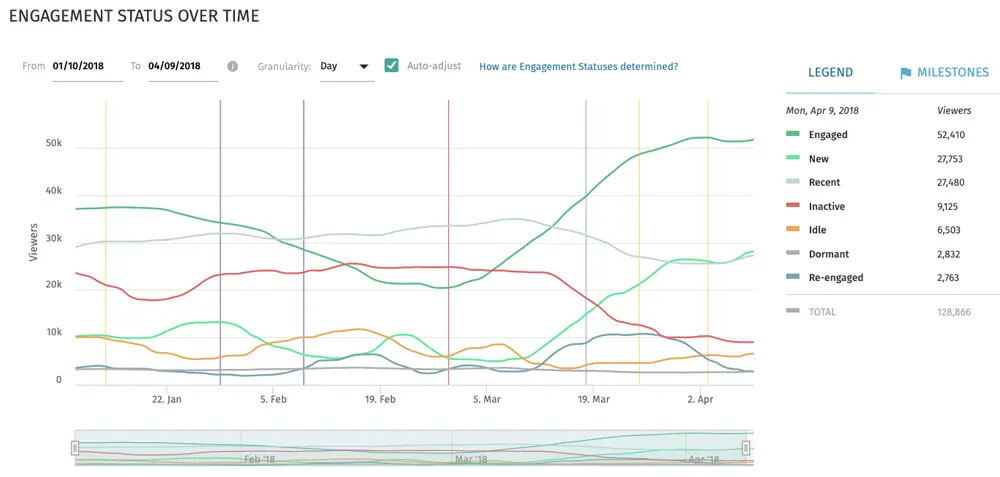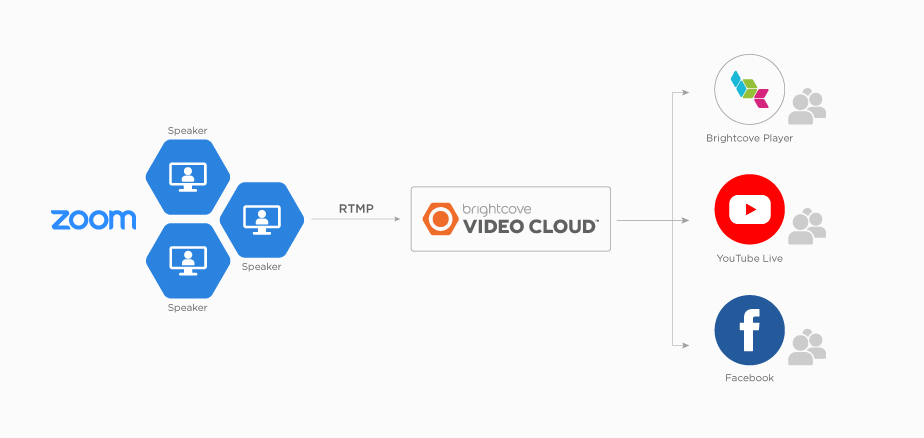Next-gen 5G wireless networks are just starting to light up around the globe, promising beefier video streaming capabilities like greater speed and more robust reliability. The deployments can’t come fast enough, as share and time spent with over-the-top content continues to grow, especially in emerging markets.
Events like Australia’s drought-driven fires, the coronavirus pandemic and other news events – like national elections – all are driving up time spent watching video on smartphones, as Brightcove’s Q4 2019 Global Video Index found.
The quarterly Video Index, which is based on more than 400 billion anonymized data points from Brightcove customers, found that time spent watching streaming video during Q4 increased 23% Y/Y globally, with spikes in news viewing in Australia Y/Y and Q/Q.
SMARTPHONE GET 55% OF THE WORLD’S VIDEO VIEWS
Smartphone share of video views neared 55% in the quarter and time spent watching video increase substantially. Globally, consumers spent 30% more time watching streaming video on iPhones and Android-based smartphones than they did during the same period a year ago.
Even tablets, which have seen their share of video views stagnate in recent quarters, saw time spent watching increase 6% in Q4 2019, compared to a year earlier.
Computers, while still seeing strong usage in short-form video viewing (0-5 mins.), were the lone device where consumers spent less time watching videos in the quarter. Computers, overall, actually also saw a sharp decline in the number of videos viewed during the quarter; that number was down 10% from a year ago.
The biggest winner in terms of global growth were connected TVs, with time watched up 114% and video viewing share growing 25% in the quarter,
The 2% decline in time spent watching videos on computers and 10% drop in views are indicative of the evolution taking place in streaming video. Where we once talked about the democracy of screens, that whatever screen at hand was the one we were most likely to choose to watch, viewers have evolved and now use mobile devices to source content on the go, and to watch that content on connected TVs.
SMARTPHONES RULE IN EMERGING MARKETS
While connected TVs are seeing growing video consumption in most developed markets, there are several, most notably developing markets in Asia-Pacific, Latin America and MENA (Middle East/North Africa) where mobile screen rule.
For example, 81% of all video starts in Asia-Pac were on smartphones in Q4 2019, up from just 45% a year earlier. Time watched jumped 38% and completion rates were at 48%, similar to the rest of the world (ROW).
In Latin America, share of video starts on smartphones was 57%, up from 43% a year earlier. Time watched was up a modest 4%, but completion rates on smartphones topped 50% for all video lengths (from 0-5 mins. through 41+ mins.), one of the better completion rates in the world.
MENA saw video starts on smartphones grow 78% Y/Y to take a nearly two-thirds share of video starts on all devices (64%). Time watched on smartphones was up a strong 41% with completion rates at 47%.
But smartphones play a major role in mature markets, too, especially, as we’re already seeing in Q1 data, during times of crisis, like the coronavirus pandemic.
Smartphone share of video views during Q4 in Europe hit 58%, and 59% in Japan/Korea. Australia/New Zealand saw share at 38% and North America 40%. But in three of the four regions, the number of video views on smartphones was up significantly, more than 65% in ANZ, 81% in Europe, and more than 60% in North America. Japan/Korea saw just a modest 20% increase in views, but did have the highest share of video views on smartphones among the four markets at 59%.
DURING CRISIS, NEWS IS KING ON A SMARTPHONE
As noted earlier, smartphones were a go-to source for information during Australia’s devastating fires late last year. During Q4 2019, news views were up 22% Y/Y on all devices. The biggest gain was shown by mid-form video (6-20 mins., a typical half-hour show excluding commercials), up 97% Y/Y. Views of short-form video (0-5 mins.), meanwhile, increased 31% and long-form content views were up 6%.
But smartphones led the pack.
Global Video Index data showed the number of news video views of all lengths doubled between Q4 2018 and Q4 2019 on smartphones in Australia. Short-form video views (0-5 mins.) were up 159%, medium-form video views (6-20 mins.) increased 182%, with the number of views for news-related videos over 21 minutes in length rising about 18%.
Short-form video views also increased on tablets and connected TVs (18% and 123% respectively), with computer views declining 13%. While medium-form content views increased 182% on smartphones, views also were up on tablets (85%), computers (60%) and connected TVs (43%).
THE BOTTOM LINE
With 5G on the horizon, there’s little doubt mobile will play an increasing role in the distribution and consumption of streaming video, especially on smartphones, the screen most often at hand for a massive proportion of consumers globally when they need news, for example, on the go.
For content owners, especially those for whom news content is critical, smartphones must be a pillar of any distribution strategy. It certainly is for viewers.













